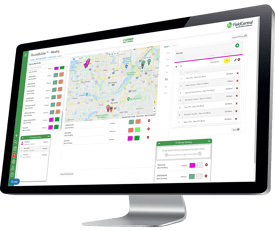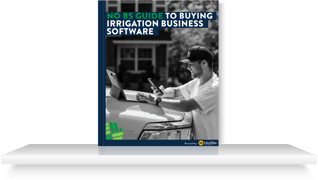
QuickBooks is the most commonly used accounting software in the Green Industry. Our friends at Cycle CPA recently asked their team of experts for their best tips on utilizing QuickBooks, and here’s what they came up with:
- Review your Transaction List by Vendor report in QuickBooks as you categorize transactions. This ensures that transactions are correctly categorized according to the vendor, based on the account history. You can utilize this report to review which vendor you do the most business with to leverage discounts or payment terms in the future.
- Be careful when syncing QuickBooks with field management software, especially if you are unsure of how it impacts your QuickBooks. Some field management software programs are not recommended for syncing with QuickBooks.
- Sync the bank with QuickBooks. This will help with the time-consuming process of entering transactions and improve accuracy.
- Use the automatic invoicing feature for recurring revenue customers. This streamlines accounts receivable and ensures that no invoices slip through the cracks.
- Add discounts on QuickBooks invoices if your clients advertise special offers and discounts. This shows customers that they are getting a good deal.
- For landscaping companies with multiple service lines that invoice from QuickBooks Online (QBO) or sync with QBO: Set up different service lines in the Products & Services section and ensure each product/service is mapped to a corresponding chart of accounts. This helps determine the percentage of total revenue for each service if divisions/class tracking is not being used. It also helps assess cash flow by distinguishing recurring revenue from non-recurring revenue, which is useful for potential investors if the owner ever wants to sell the business. For example, if you set up a Maintenance Product & Service for invoicing maintenance services, ensure that the product is mapped to a Maintenance Income chart of accounts. This way, the revenue derived from Maintenance services will be shown on the Profit & Loss statement.
- For QuickBooks Plus or QuickBooks Advanced Subscriptions: Utilize the Project Tracking feature for job costing, even on a low-level scale. When categorizing transactions, include the customer’s name for all Cost of Goods Sold expenses. This allows you to review the Profit and Loss by Customer to examine profitability per customer/project on a low-level scale. Overhead allocation can be done via journal entries to assess profitability per customer/project on a high-level scale. This helps you evaluate pricing and estimating. If more than one project is being completed per customer, set up the different projects under the Project tab in the left-hand pane and update the invoices to their respective projects. Then, categorize transactions per project.
- Review your Profit & Loss statement as a percentage of income. This can help show trends and measure performance, especially when comparing different time periods.
- Utilize the graphs in the “Business Center” of the QuickBooks Online dashboard. For additional reporting and benchmarking specific to the green industry, check out our CycleScape Reporting™.
- Find a payroll provider that syncs with QuickBooks or use QuickBooks Payroll. This streamlines the process and reduces the time required to record payroll between direct (field labor) and indirect (overhead labor) costs.
- Utilize the “Rules” function in the bank feeds section of QuickBooks, but don’t rely on it 100%.
- Capture all information for vendors (full legal name, nickname if applicable, email, phone, address, EIN—regardless of whether they are 1099 or not). Essentially, obtain a W-9 before doing business with them.
- If you utilize QuickBooks for accounts receivable or accounts payable, monitor and check the Aging reports frequently. This is a great tool to ensure customers are paying you on time, and that you are managing paying bills effectively.
- Keep the chart of accounts simplified and avoid using too many sub-accounts. Often, the additional detail doesn’t provide any added value.
- If clients round up or down on invoices, always mark the invoice as paid in full. When matching deposits later, you can resolve discrepancies without having an open invoice for a few cents.
- Always review negative registers in your chart of accounts or account names you’re unfamiliar with that have transactions in them. Some accounts, like accumulated depreciation and distribution equity accounts, are typically negative, but others usually shouldn’t be.
- Don’t just book check payments when you receive them; also book the deposit when you take it to the bank or use mobile deposit. Failing to do so often causes reconciliation issues, especially if you are invoicing out of QuickBooks.
We hope you can take a few of these tips and implement changes to improve the accounting side of your business!
Need to help with your books? Reach out to Cycle CPA to learn more about how they can support your business.







